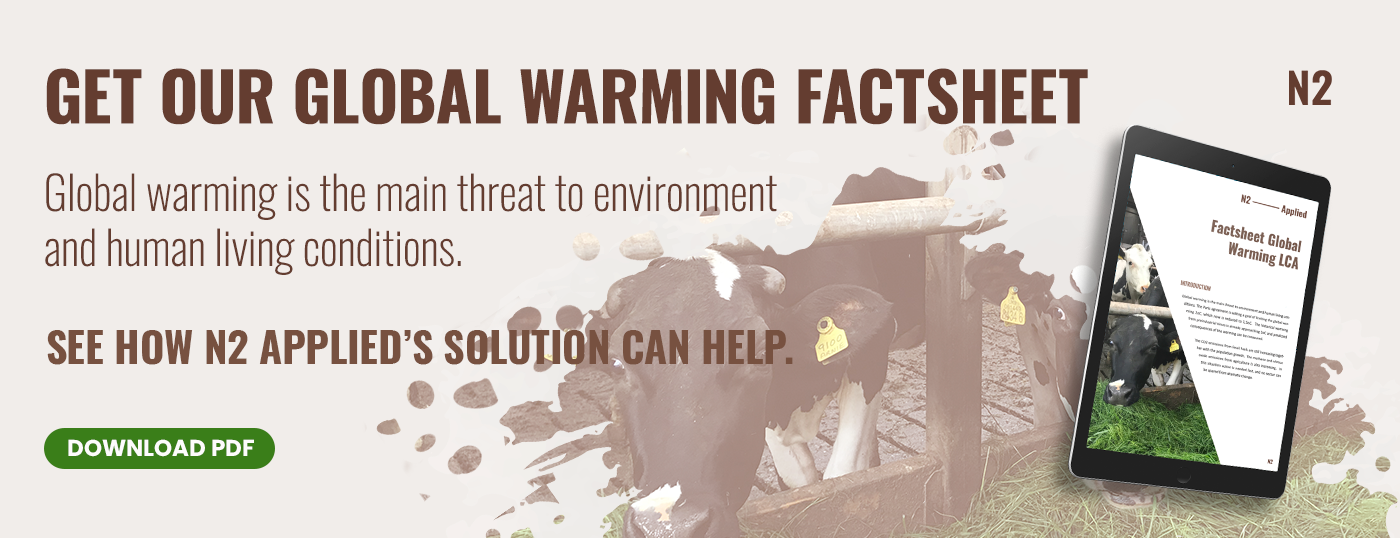Reducing the carbon footprint of all industries has become a huge focus in recent years, with refreshed commitments made by world governments at COP26 in November 2021. A large portion of the global focus around carbon reduction has been directed towards the agriculture industry due to its methane emissions being the highest from any one single sector. Regardless of whether it is right or wrong to target agriculture so closely; there is undeniable room for improvement in the sector. Some of the largest food producers in the world have also matched commitments to move towards net-zero, such as Unilever, Nestle and Arla Foods. Therefore, this can be seen as an opportunity for improvement while the eyes of the world are upon us, with the potential to show how agriculture can be a force for a sustainable future.
Livestock methane
Methane is a potent greenhouse gas (GHG), around 27 times more warming than carbon dioxide in the atmosphere. Unfortunately, ruminants such as cattle produce methane throughout their digestion process, which is released directly from the cow as enteric emissions or emitted later in the manure and slurry. Methane can also be emitted from the slurry of monogastric animals like pigs. Around 60% of greenhouse gas (GHG) emissions from agriculture in the EU come from these sources.
Luckily, emerging solutions are gaining traction for reducing these emissions and have a significant potential impact on GHG reduction. Improved animal genetics and breeding, and feed additives and feedstocks have already demonstrated their potential to reduce enteric methane production. Manure management solutions are also available to reduce methane production in storage, including N2's technology which practically eliminates methane emissions from stored slurry. In addition, it is possible to combine a series of these solutions, offering the industry the chance to effectively control methane emissions from livestock.
Soil carbon
Another significant contributor to GHG emissions in agriculture is from soils, accounting for nearly 40% of EU agricultural emissions, and there is great potential to reduce this. These emissions can come from the loss of organic matter breaking down and released as carbon dioxide, or from direct nitrous oxide emissions, which is a GHG 273 times as powerful as carbon dioxide. Avoiding these emissions doesn’t require big changes in a lot of cases, rather, just requires the execution of good soil management practices. This can be achieved by making sure to cultivate under the right conditions and maintaining soil organic matter through organic additions or cover cropping to avoid carbon dioxide losses. Further, applying fertiliser and manure at the right time and in the right conditions, such as when soils aren't waterlogged, will prevent the production of nitrous oxide.
Soils' negative contribution to GHG emissions can potentially be halted or partially reversed by using the soils’ capability of acting as a carbon sink. Several methods can increase carbon in soils, which creates an opportunity for the industry to connect the retainment of carbon in the soil towards carbon credits. However, soils have a finite capacity for holding carbon, which is easily lost again if good management is interrupted. A better view of soil carbon for farmers may be to see it as a way of increasing soil resilience and improving productivity, leading to fewer inputs and the carbon cost associated with them.
Reduced fertiliser use
Most fertilisers have a carbon cost associated with their production. Nitrogen from the Haber-Bosch process, in particular, requires energy from gas or coal to produce. Offsetting some of this on-farm by improving nutrient recycling, using more organic inputs and maximising soil health can go some way to reducing the carbon footprint of a farm business. In addition, it offers the chance to lower costs and make production systems more sustainable (and potentially frees up more carbon credits).
More effective use of organic fertilisers, particularly nitrogen in manures and slurries, can offset a lot of nitrogen fertiliser. Much of the nitrogen contained in livestock slurry for instance, is lost as ammonia. Minimising these losses means that more nitrogen will be available to the crop, which reduces the need for additional fertiliser. Additionally, ammonia emissions eventually turn into nitrous oxide, so reducing these emissions leads to GHG reduction. Several different technologies are currently on the market to do this, such as low emission spreading technology, slurry acidification, and the N2 plasma system, which also has the added benefit of controlling methane emissions.
Energy and transport
Despite the transport and energy sector being the largest global emitter of GHGs (at about 73%), in agriculture, the proportion of emissions coming from those sources is relatively low. As discussed earlier, methane and soils are the low hanging fruit in terms of reduction potential, but that does not mean that gains cannot be made in improved energy use in the agriculture sector. Increased use of renewables, better soil management leading to lower diesel use, and improved efficiency of farm energy management can all contribute to sustainability and cost reduction.
Carbon-negative agriculture
Moving towards net-zero in agriculture may occasionally appear like a daunting task, but the sector has massive potential to act as a global example of GHG reduction rather than being an emitter. Growing crops, managing soils, protecting nature and stewarding the countryside are all activities farmers carry out in their day to day work. However, the current state of affairs with emissions means these facts are often overlooked and instead the negatives take centre stage. The farming community could use this as an opportunity for improvement, adopting new technologies and techniques to reach net-zero and to show how agriculture can be a force for a sustainable future.




